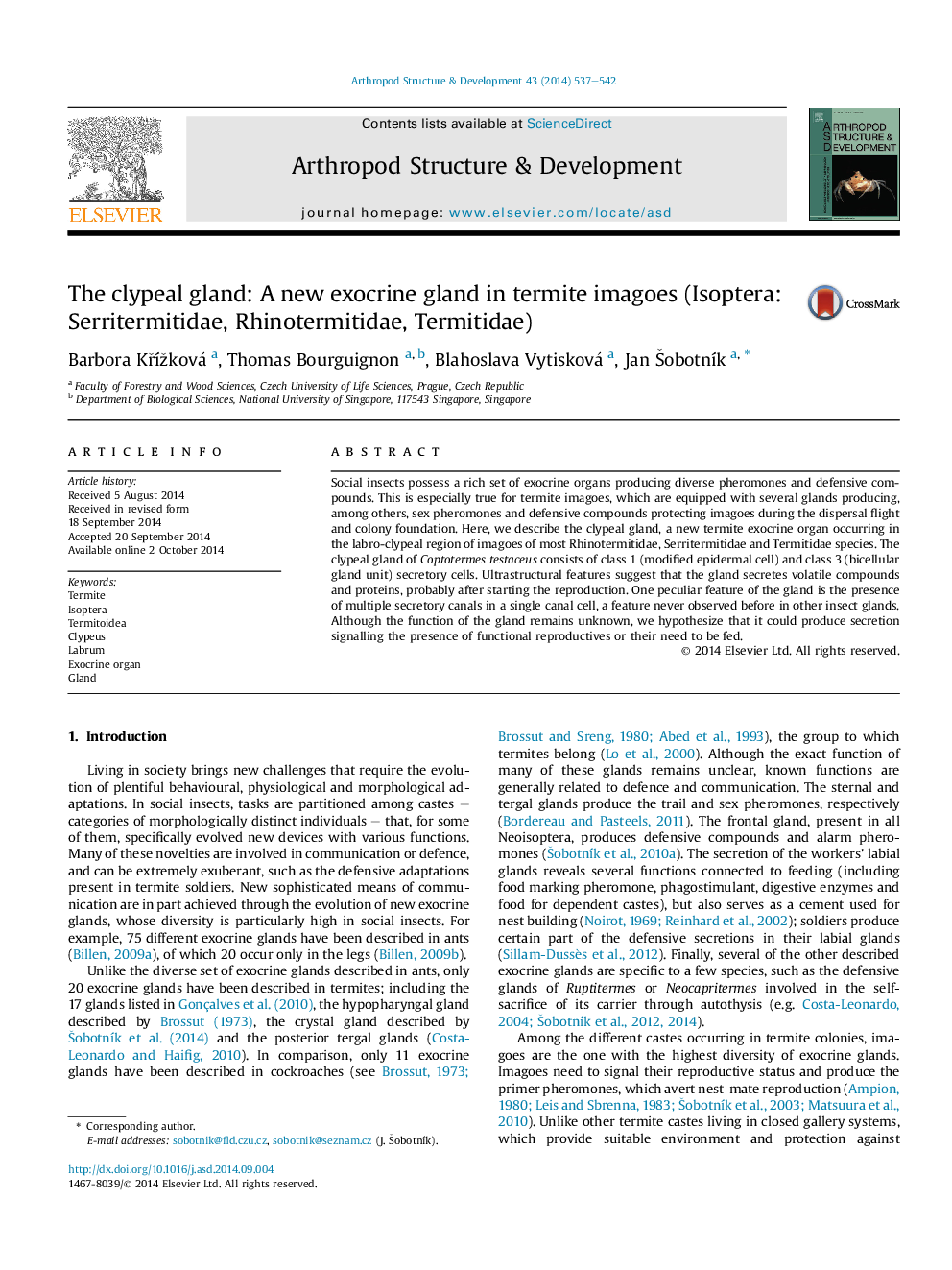| Article ID | Journal | Published Year | Pages | File Type |
|---|---|---|---|---|
| 2778665 | Arthropod Structure & Development | 2014 | 6 Pages |
•Clypeal gland represents a new exocrine organ of termites.•Clypeal gland occurs only in winged imagoes in labroclypeal part of the head.•The gland consists of class 1 and class 3 secretory cells.•The gland occurs in most of Rhinotermitidae, Serritermitidae and Termitidae species.•It reveals only low activity in imagoes before or during the dispersal flight.
Social insects possess a rich set of exocrine organs producing diverse pheromones and defensive compounds. This is especially true for termite imagoes, which are equipped with several glands producing, among others, sex pheromones and defensive compounds protecting imagoes during the dispersal flight and colony foundation. Here, we describe the clypeal gland, a new termite exocrine organ occurring in the labro-clypeal region of imagoes of most Rhinotermitidae, Serritermitidae and Termitidae species. The clypeal gland of Coptotermes testaceus consists of class 1 (modified epidermal cell) and class 3 (bicellular gland unit) secretory cells. Ultrastructural features suggest that the gland secretes volatile compounds and proteins, probably after starting the reproduction. One peculiar feature of the gland is the presence of multiple secretory canals in a single canal cell, a feature never observed before in other insect glands. Although the function of the gland remains unknown, we hypothesize that it could produce secretion signalling the presence of functional reproductives or their need to be fed.
